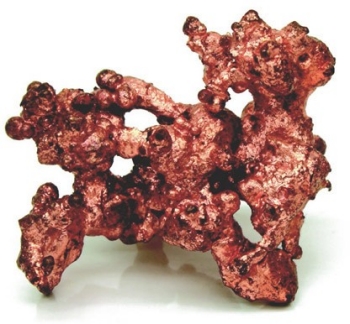Magnets And Cents

By Celeste Beley
With as plentiful as magnets are in our everyday lives– from the electronics and motors to our refrigerators covered in them – it’s hard to imagine that there are only a few metals that are naturally magnetic.
As we become more gadget obsessed, our need for magnetic materials increases. And now researchers have made magnets out of two non-magnetic metals: copper and manganese. This discovery could be useful in microscopic electronics and sensors.
Naturally Magnetic
Almost all materials display some type of magnetic property when placed in a magnetic field. The electrons will point in the direction of the field, but in the case of a ferromagnet, the compass needles remain aligned even after the magnetic field is turned off.
Products that use magnets like speakers, motors, and electronics all contain iron, cobalt, nickel, or their alloys. But because there are so few naturally magnetic elements available, their application is restricted, hence the research into synthetic magnets.
Creating A Magnet
To create the magnet using copper and manganese, researchers deposited a thin layer of buckyballs, a soccer ball shaped molecule made completely of carbon atoms that can pull electrons out of an adjacent metal, followed by a thin layer of copper or manganese, onto a nonmagnetic chip. The final piece was just 20 nanometers wide, but it retained its magnetic alignment even after it was taken out of the magnetic field. Although weak, the discovery was significant and was published in Nature.
Researchers then turned to how the materials were generating magnetism. The taller stacks contained greater magnetism, telling the researchers that the origination of the magnetism was in between the layers. To confirm their findings, they used a technique called Muon spin rotation to measure local magnetic field strength.
Muons, subatomic particles that have a compass-like spin at the interface where the metal and buckyballs meet, experienced the strongest rotations. This indicated that the electrons at the interface were the cause of the magnetism.
Future State
Lead author in the study, Oscar Cespedes, thinks they can still improve the overall magnetism. The copper, manganese and buckyball structure is 30 times weaker than iron, but as he points out “copper is pretty much as far from magnetic as you can get.” Researchers believe that many other material combinations will exhibit this effect and they will continue to seek the right combination of molecule and metal to maximize their effects.
Discussion Questions
- How will the development of synthetic magnets aid the electronics industry? What other applications could benefit?
- What materials do you think could exhibit similar or stronger properties? Why?

